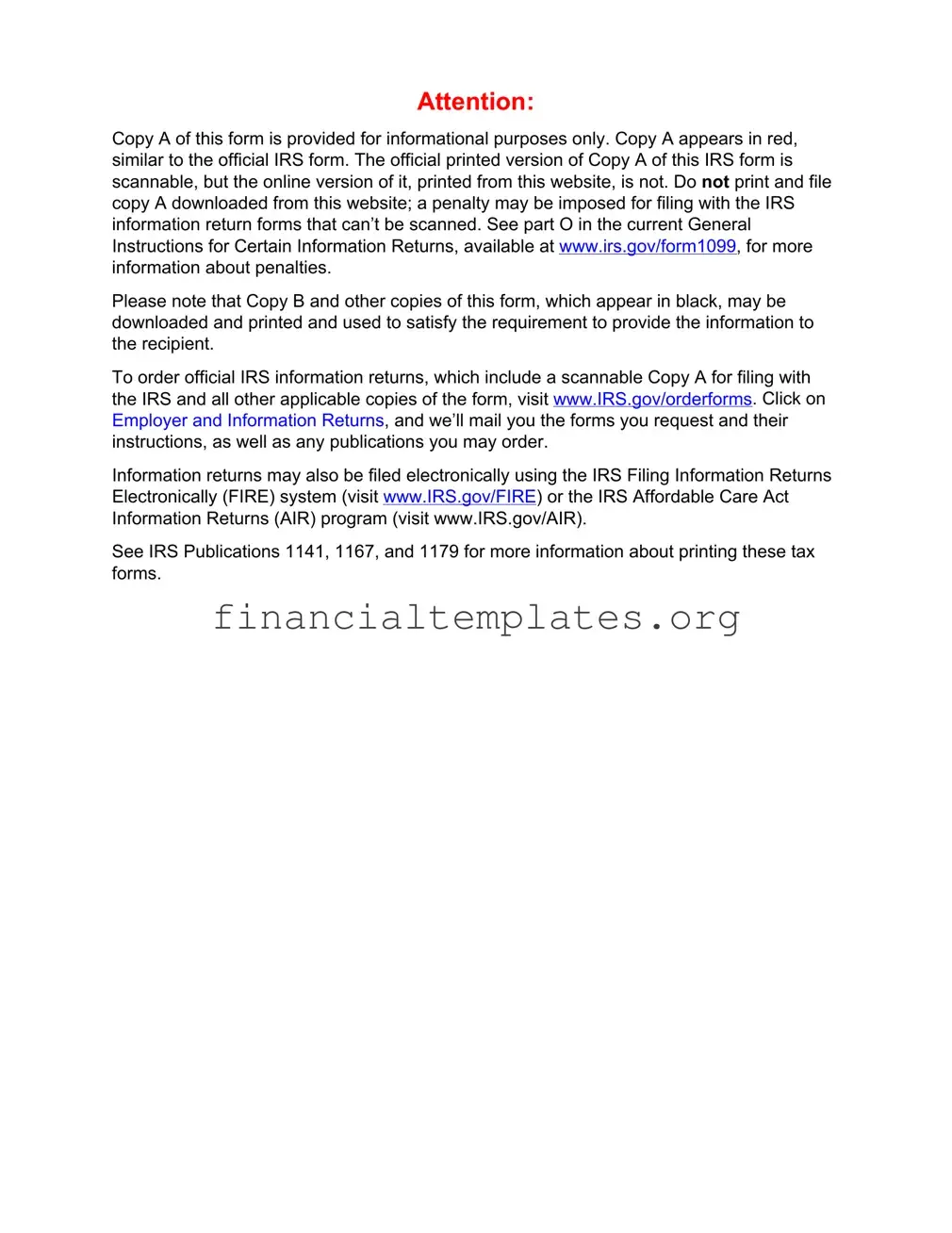The IRS 1099-INT form, a document utilized for reporting interest income, shares similarities with several other tax documents used for reporting various types of income and financial transactions. One similar document is the IRS 1099-DIV form. This form is used to report dividends and distributions received from investments. Both the 1099-INT and 1099-DIV forms play crucial roles in ensuring taxpayers correctly report investment income, hence they have a similar layout and require detailed financial information.
The IRS 1099-MISC form is another document resembling the 1099-INT in terms of its purpose to report income, but focuses on miscellaneous income. This can include rental income, prizes, and awards, akin to how the 1099-INT form reports interest earned. Both forms ensure income outside of wages, salaries, and tips is accurately reported to the IRS.
Similarly, the IRS 1099-B form, used for reporting proceeds from broker and barter exchange transactions, echoes the 1099-INT form in its financial reporting nature. The 1099-B form captures gains or losses from the sale of securities, which, like the interest income reported on a 1099-INT, must be included in a taxpayer's income calculations for tax obligations.
The IRS W-2 form, though primarily for reporting wages and salaries from employment, shares common ground with the 1099-INT form in its role in the tax reporting process. Both documents are essential for individuals to accurately report their annual income to the IRS and determine the amount of taxes owed or refund due.
IRS Form 1040, the U.S. individual income tax return, is inherently connected to the 1099-INT form. Information from the 1099-INT, like that from other income-reporting forms, is used to complete various lines of Form 1040. This solidifies how intertwined the 1099-INT form is with the broader tax reporting and filing system.
The Schedule B (Form 1040) is specifically designed for reporting interest and dividend income, which makes it directly related to the 1099-INT form. Taxpayers use information from their 1099-INT forms to fill out Schedule B, showcasing the direct relationship between these documents in the reporting of interest income on a taxpayer's return.
The IRS 1099-R form reports distributions from pensions, annuities, retirement or profit-sharing plans, IRAs, and insurance contracts. It is akin to the 1099-INT form as both involve the reporting of income that is not from direct employment but impacts an individual’s tax liability.
The IRS 1098 form, used to report mortgage interest, shows a relationship to the 1099-INT through its focus on interest, albeit in a different context. Where the 1099-INT deals with earned interest income, the 1098 form focuses on interest expense, emphasizing the multifaceted nature of interest in tax documentation.
The IRS 1099-G form reports certain government payments, including state tax refunds and unemployment compensation. While its primary focus is distinct from the 1099-INT form, which deals with interest income, both are pivotal for individuals who need to report these types of incomes to calculate their taxes accurately.
Finally, the IRS 1099-S form, reporting proceeds from real estate transactions, parallels the 1099-INT form in that it deals with financial transactions that must be reported for tax purposes. Though one captures interest income and the other real estate transactions, each serves to provide the IRS with specific types of income information crucial for an individual's tax liability.






 CORRECTED (if checked)
CORRECTED (if checked)

 CORRECTED (if checked)
CORRECTED (if checked)